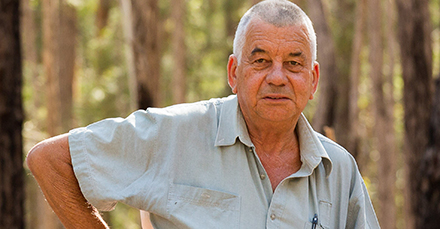Studies of Black Summer by both pro-logging and anti-logging academics did not test the effects of logging on the extent and severity of the fires, as claimed. There is no direct relationship between logging history and fire behaviour. Logging can affect the arrangement and quantity of fuel, as well as microclimate, to increase or decrease potential fire severity immediately and at different times afterwards. The effects depend on post-logging management.
Both sides of the unnecessary debate wrongly attribute the recent holocaust to climate change. But severe drought and extreme weather are nothing new. Historical observations and empirical data show that lack of maintenance by mild fire causes megafires ignited by accident, arson or lightning in bad seasons.
Climate and weather were more severe during the Settlement Drought than during Black Summer. Three consecutive extreme fire seasons occurred from 1790/91 to 1792/93. Aboriginal fires were burning 24/7 to the northwest of Sydney and Parramatta. There were no firestorms or megafires because fuels were light and discontinuous.
Captain-Lieutenant Watkin Tench wrote:
“But even this heat [430C] was judged to be far exceeded in the latter end of the following February [1791], when the north-west wind again set in, and blew with a great violence for three days. At Sydney, it fell short by one degree of what I have just recorded: but at Rose Hill, it was allowed, by every person, to surpass all that they had before felt, either there, or in any other part of the world. Unluckily they had no thermometer to ascertain its precise height. It must, however, have been intense, from the effects it produced. An immense flight of bats, driven before the wind, covered all the trees around the settlement, whence they every moment dropped dead, or in a dying state, unable longer to endure the burning state of the atmosphere.’ Nor did the perroquettes, though tropical birds, bear it better; the ground was strewed with them in the same condition as the bats.”
Australia’s first megafire occurred in South Gippsland around 1820 after Aboriginal burning was disrupted by a 1789 smallpox epidemic. The second, in 1851, burnt five million hectares of Victoria and ignited the rigging of a ship at sea.
Whatever the effects of logging at a coupe scale, it can have no influence on the potential for catastrophic fire at a landscape scale, because it affects a very minor proportion. The same applies to prescribed burning as currently practised in south-eastern Australia, where less than 2% of the landscape is treated per annum.
Sixty years of empirical data from the southwest show that unless half the landscape is properly maintained by mild fire (~ 9% per annum x maximum 6 years persistence of effect = ~ 50%), catastrophes will occur in bad seasons: Long-term impacts of prescribed burning on regional extent and incidence of wildfires—Evidence from 50 years of active fire management in SW Australian forests – ScienceDirect
In 2003, 500 homes were destroyed and four people were killed when fires from Kosciuszko National Park reached Canberra. Lightning also ignited many fires in State Forests and private lands adjoining the park. They were controlled with little trouble within three days.
A Parliamentary Inquiry heard from experienced land managers, that we’re not maintaining the bush properly. In 2004, Council of Australian Governments (COAG) set up an alternative inquiry under two academics and an emergency manager. They proposed ‘learning to live with bushfires’ and gave us ‘education’, emergency response and evacuation instead of sustainable management. Hundreds of people have since died in bushfires.
One of the academics set up a research unit at Wollongong, which has guided New South Wales’ disastrous fire management. The other co-authored an article cited by DTN (29 April) arguing about logging and distracting attention from the critical issue of landscape maintenance by prescribed burning.
This article by five professors and one forest manager stated that “the extent and severity of the fires was determined almost entirely by three years of well-below-average rainfall [and] extreme fire weather conditions”. Pre-history, history, experience and science show that it is not so. http://www.sciencepublishinggroup.com/journal/paperinfo?journalid=231&doi=10.11648/j.eeb.20200504.17
The professors say we need to integrate Aboriginal knowledge, management experience and research. We did and COAG swept it under the carpet. Now they’re embracing the climate cop-out. Bushfire disasters will continue to escalate while-ever governments continue to take advice from professors and fire-chiefs rather than experienced land and fire managers, whether black, white or brindle.
Vic Jurkis is a former senior NSW Forestry Commission professional forester. In 2004 he was awarded a Fellowship by the Joseph William Gottstein Memorial Trust, to investigate eucalypt decline across Australia. He has published two books, Firestick Ecology, and The Great Koala Scam, both available from Connor Court.






